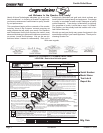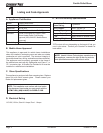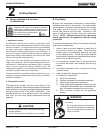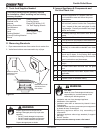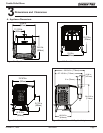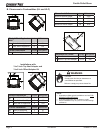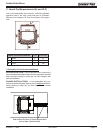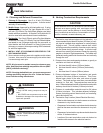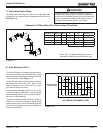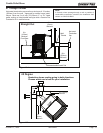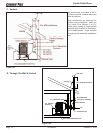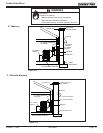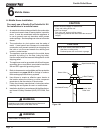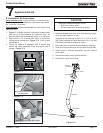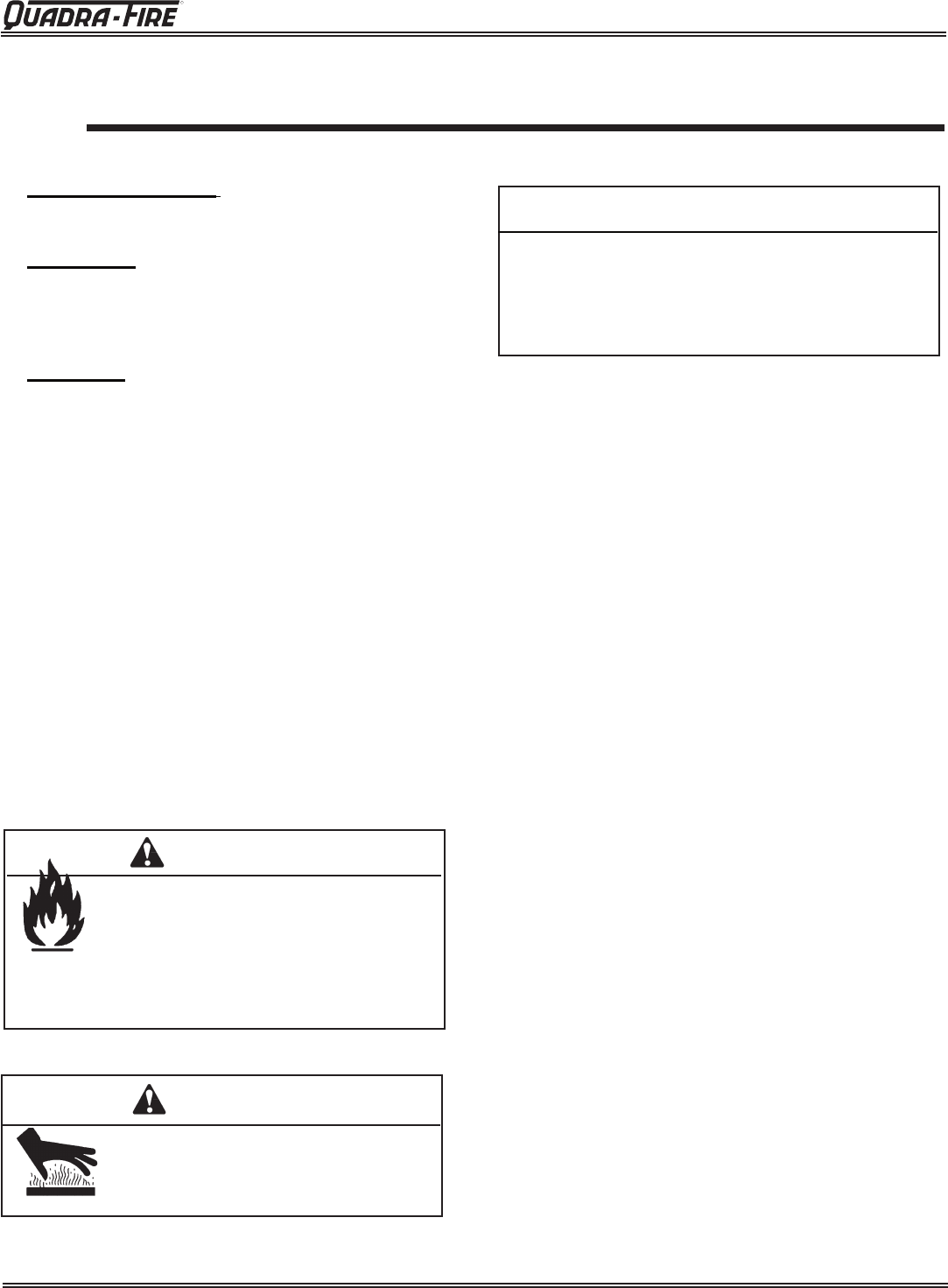
Page 10
250-6422D
October 11, 2005
R
Castile Pellet Stove
R
R
Do not terminate vent in any enclosed or semi-enclosed
area such as a carport, garage, attic, crawl space, under a
sun deck or porch, narrow walkway or closely fenced area,
or any location that can build up a concentration of fumes
such as a stairwell, covered breezeway, etc.
CAUTION
Vent surfaces get HOT, can cause burns if
touched. Noncombustible shielding or guards
may be required
WARNING
A. Chimney and Exhaust Connection
1. Chimney & Connector: Use 3 or 4 inch (76-102mm)
diameter type "L" or "PL" venting system. It can be vented
vertically or horizontally.
2. Mobile Home: Approved for all listed pellet vent. If using
the 3 inch (76mm) vertical Top Vent Adapter Kit or the 3
to 6 inch (76-152mm) Top Vent Offset Adapter, use listed
double wall flue connector. A Quadra-Fire Outside Air Kit
must be used with manufactured home installations.
3. Residential: The 3 inch (76mm) vertical Top Vent Adapter
Kit and the 3 to 6 inch (76-152mm) Top Vent Offset Adapter
are tested to use 24 gauge single wall flue connector or
listed double wall flue connector to Class A listed metal
chimneys, or masonry chimneys meeting ICBO standards
for solid fuel appliances.
4. INSTALL VENT AT CLEARANCES SPECIFIED BY THE
VENT MANUFACTURER.
5. Secure exhaust venting system to the appliance with at least
3 screws. Also secure all connector pipe joints with at least
3 screws through each joint.
NOTE: All pipe must be welded seam pipe whenever pos-
sible. Seal pipe joints with high temperature silicone (500°F
[260°C] minimum rated only).
NOTE: If burning shelled field corn, you must use approved
venting specifically designed for corn. Follow the instruc
-
tions from the venting manufacturer.
Fire Hazard.
• Only LISTED venting components may be
used.
• NO OTHER vent components may be used.
Substitute or damaged vent components may
impair safe operation.
WARNING
B. Venting Termination Requirements
1. Termination must exhaust above air inlet elevation. It is
recommended that at least 60 inches (1524mm) of verti-
cal pipe be installed when appliance is vented directly
through a wall. This will create a natural draft, which
will help prevent the possibility of smoke or odor venting
into the home during a power outage. It will also keep
exhaust from causing a nuisance or hazard by exposing
people or shrubs to high temperatures. The safest and
preferred venting method is to extend the vent vertically
through the roof.
2. Distance from doors and opening windows, or gravity or
ventilation air inlets into building:
a. Not less than 48 inches (1219mm) below;
b. Not less than 48 inches (1219mm) horizontally
from;
c. Not less than 12 inches (305mm) above.
3. Distance between bottom of termination and grade
should be 24 inches (610mm) minimum. This is con-
ditional upon plants in the area, and nature of grade
surface. The grade surface must be a noncombustible
material (i.e., rock, dirt). The grade surface must not be
lawn. Distance between bottom of termination and public
walkway should be 84 inches (2134mm) minimum.
4. Distance to combustible materials must be 24 inches
(610mm) minimum. This includes adjacent buildings,
fences, protruding parts of the structure, roof overhang,
plants and shrubs, etc.
5. Termination Cap Location (Home Electrical Service)
• Side-to-side clearance is to be the same as minimum
clearance to vinyl inside corners.
• Clearance of a termination cap below electrical service
shall be the same as minimum clearance to vinyl sof
-
fits.
• Clearance of a termination cap above electrical service
will be 12 inches minimum.
• Location of the vent termination must not obstruct or
interfere with access to the electrical service.
4
Vent Information



